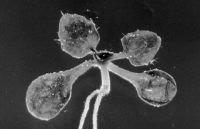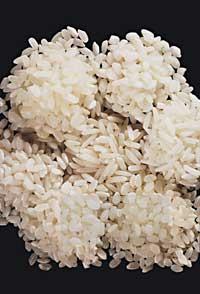Clarification of the genetic code of rice
2002/04/05 Orobengoa, Olatz - Elhuyar Zientziaren Komunikazioa

Two groups of scientists from Beijing and Switzerland have presented the first draft genetic code of rice. The Beijing team has investigated the subspecies that indicates that it is grown in practically all of China and Asia, while the Swiss company Syngenta has investigated the Japanese subspecies that is grown in Japan and dry countries.
This is a separate research conducted by each group, which has been advanced to the Rice Genome Research Program project launched by Japan. This may be due to the identification technique used. The same method used by Celera to investigate the human genome, known as Whole Genome Shotgun, has been used. This technique is faster than is usually used, but the results are not very accurate, so the published results are sketches.
In any case, the scientific community considers that these drafts are a very good basis for the research of the rice genome. Knowing the genome of rice will create new varieties of rice that improve crops. Genomic genes are expected to be identified and varieties with better yields are obtained in the harvest, not only through transgenesis, but also through new crosses from wild varieties.

To date, the genome of harvest plants has not been presented, with rice being the first. Both subspecies have between 30,000 and 40,000 genes more than a human being and four times more than Arabidopsis thaliana, the only plant genome that has been identified so far. The moment the entire genome is cleared, it is believed that it will serve as the basis for the study of the genomes of other harvest plants, since rice is the harvest plant with the most ‘simple’ genome.
All this can have terrible consequences worldwide, as rice is the staple food of half the world's population. Annual rice production is 600 million tons, of which 50% corresponds to crops in China and India.

Gai honi buruzko eduki gehiago
Elhuyarrek garatutako teknologia





